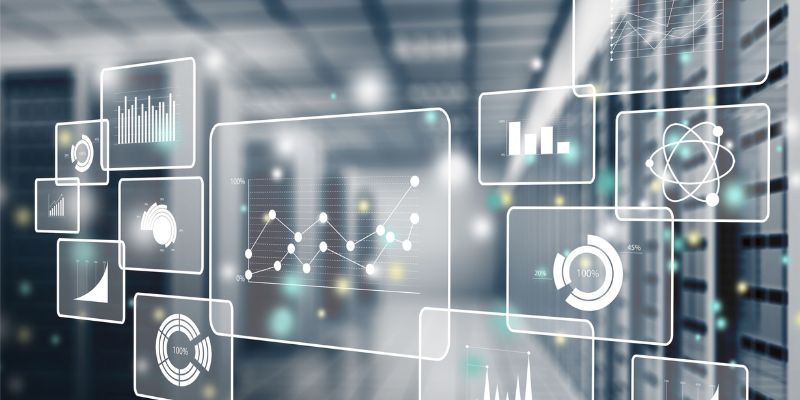The Power of Data-Driven Decision Making
KEITH TOUSSANT, DIRECTOR OF ANALYTICS
Imagine a world where companies no longer make decisions based on instincts or gut feelings but on fact-based evidence derived through the technological advancement of analytics.
Historically, companies have been limited in their ability to use or make sense of the data they’ve collected, bypassing a wealth of knowledge and insights that could potentially help them infer about future conditions. Though analytics is not a means for fortune-telling, it offers a systematic method for discovering and communicating key trends and insights, which in turn provide businesses with the confidence and support needed in key decision making.
Data analytics tools and methodologies allow for fast, accurate and timely decision making based on the knowledge made available by processing raw data. These data may exist in a range of formats such as structured/unstructured, Spatiotemporal, real-time, or dark data; but the creation Artificial Intelligence (AI) and Machine Learning (ML) techniques provide fairly simple means for transforming data into meaningful insights.
Though analytics is not a means for fortune-telling, it offers a systematic method for discovering and communicating key trends and insights, which in turn provide businesses with the confidence and support needed in key decision making.
Machine learning is a subset of AI that allows computers to develop models and algorithms to perform certain tasks without a need for human intervention. ML reduces the amount of time developers spend developing merely “good” solutions and allows machines to identify the “most optimal” solution in a fraction of the time. ML methods may be supervised (e.g. linear and logistic regression) or unsupervised (e.g. cluster analysis) techniques. Although data collection and manipulation processes play an integral role in preparing data for further analysis, the tools and methods employed to transform these data into useful insights unleashes the true power of analytics. The pros and cons of employing ML techniques can be found below:
Pros:
- Easy identification of hidden patterns and trends
- Faster and more efficient model development
- Robust systems that continuously learn without need for human input
- Handles large amounts of data in various formats (structured and unstructured)
Cons:
- Can be computationally intensive for machines
- Requires large amounts of data to build robust solution
- Data must be prepared in format suitable for intended model result
- May not always yield intuitive results
Natural Language Processing – Sentiment Analysis:
Valuable insights exist in nearly every piece of written or spoken text. From movie reviews to tweets to general comments left in forum groups, this text can be extracted and processed to acquire emotional knowledge (i.e. attitudes and perceptions) of a given user or user group. The gathering, processing and interpretation of such text is a branch of AI referred to as Natural Language Processing (NLP).
“…An organization’s ability to learn, and translate that learning into action rapidly, is the ultimate competitive advantage.”
–Jack Welch
For example, many global and national headlines are discussed openly on social media (e.g. Twitter, Yelp, Facebook). Tweets often contain valuable information on people’s thoughts, feelings and attitudes towards: companies and organizations, travel destinations, sporting events and TV shows, political / social changes and perceptions of prominent individuals. These emotions expressed via text can then be processed and analyzed to provide valuable insight into the overall perceptions or sentiments towards an organization at specific point in time. This “sentiment analysis” enables an organization’s public relations team to quickly respond to unfavorable perceptions and ultimately reduce reputational damage. However, since NLP deals primarily with unstructured text/language, there are several pros and cons associated with this technique:
Pros:
- Allows for subjective, emotional classification of everyday language
- Provides ability to understand perceptions and attitudes toward a business
- Requires minimal physical interaction (e.g. interviews, outreach) to obtain such information
Cons:
- Inability to distinguish between sarcasm or ironic commentary
- Language meanings and interpretations may vary geographically
- Individuals having varying definitions of “negative” and “positive” language
Former Chief Executive Officer and author, Jack Welch, states that “an organization’s ability to learn, and translate that learning into action rapidly, is the ultimate competitive advantage.” So regardless of the technology employed by your business, the amount of knowledge and value that exists within your data is limitless.
The migration to a data-driven society does not alter the way business in conducted; rather, it enhances customer experiences, optimizes performance and operations and provides business with deep knowledge to foster a culture of data-driven decision making.
RESOURCES FOR FURTHER READING
- Netflix & Data Analytics: An article describing how Netflix leverages analytics to create content, and make TV show/movie recommendations to its users.
- Leading in Data & Analytics: A survey of global executives reveal the importance of analytics in driving success relative to other tools and technical capabilities.
- What Is Big Data Analytics: A comprehensive explanation of Big Data Analytics including: history, users, and functionality.
